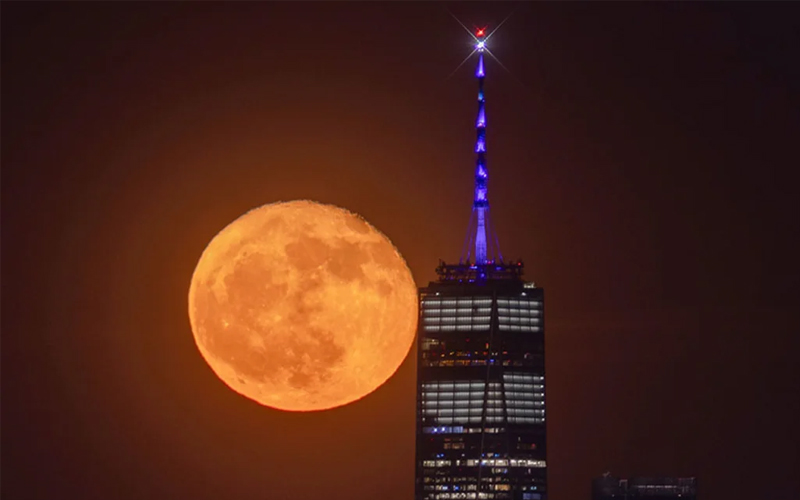Final micromoon of the year lights up the spring sky Skywatchers are in for a celestial treat as May’s full flower moon graces the night sky on Sunday and Monday. Despite being the final micromoon of 2025 — meaning it appears smaller than usual — this moon will shine brightly as it rises in the southeast shortly after sunset. According to EarthSky, the full moon officially peaks on Monday, May 12 at 12:56 p.m. ET, but it will appear full both Sunday and Monday nights. 🔗 Related: Upcoming Moon Phases and Sky Events in 2025 What is a micromoon? A micromoon occurs when the moon reaches the furthest point in its elliptical orbit from Earth, making it appear slightly smaller in the sky. This May, the moon will be 251,939 miles (405,456 kilometers) from Earth — compared to the average of about 238,855 miles. Even so, the moon’s brilliance won’t be dimmed for observers across North America and beyond. Why is it called the "flower moon"? The term “flower moon” originates from Native American traditions. Many tribes named full moons to reflect seasonal changes. For May, flowers in full bloom inspired the poetic name. Comanche: Flower Moon Creek & Choctaw: Mulberry Moon Cree: Frog Moon Anishnaabe: Blossom Moon Apache: "Season when the leaves are green" 🔗 Learn more about moon names and their Native origins Remaining full moons in 2025 After May’s flower moon, there are seven more full moons to enjoy in 2025. Notably, the final three will be …
Amelia
Amelia
Topics:

Final micromoon of the year lights up the spring sky
Skywatchers are in for a celestial treat as May’s full flower moon graces the night sky on Sunday and Monday. Despite being the final micromoon of 2025 — meaning it appears smaller than usual — this moon will shine brightly as it rises in the southeast shortly after sunset.
According to EarthSky, the full moon officially peaks on Monday, May 12 at 12:56 p.m. ET, but it will appear full both Sunday and Monday nights.
🔗 Related: Upcoming Moon Phases and Sky Events in 2025
What is a micromoon?
A micromoon occurs when the moon reaches the furthest point in its elliptical orbit from Earth, making it appear slightly smaller in the sky. This May, the moon will be 251,939 miles (405,456 kilometers) from Earth — compared to the average of about 238,855 miles.
Even so, the moon’s brilliance won’t be dimmed for observers across North America and beyond.
Why is it called the “flower moon”?
The term “flower moon” originates from Native American traditions. Many tribes named full moons to reflect seasonal changes. For May, flowers in full bloom inspired the poetic name.
-
Comanche: Flower Moon
-
Creek & Choctaw: Mulberry Moon
-
Cree: Frog Moon
-
Anishnaabe: Blossom Moon
-
Apache: “Season when the leaves are green”
🔗 Learn more about moon names and their Native origins
Remaining full moons in 2025
After May’s flower moon, there are seven more full moons to enjoy in 2025. Notably, the final three will be supermoons, appearing larger and brighter than average.
-
June 11 – Strawberry Moon
-
July 10 – Buck Moon
-
August 9 – Sturgeon Moon
-
September 7 – Corn Moon
-
October 6 – Harvest Moon (Supermoon)
-
November 5 – Beaver Moon (Supermoon)
-
December 4 – Cold Moon (Supermoon)
Eclipses to mark on your calendar
Two major eclipse events are expected later in the year:
🔴 September 7–8: Total Lunar Eclipse
Visible from Europe, Asia, Africa, Australia, and parts of South America, this eclipse — also called a “blood moon” — happens when the Earth’s shadow fully covers the moon, casting a reddish hue
Subscribe to Our Newsletter
Keep in touch with our news & offers













